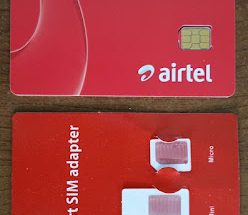Most banks require their customers to maintain a minimum balance in their savings account. Failing to do this attracts and non-maintenance penalty. The minimum balance requirement could range anywhere between Rs 5,000- Rs 10,000 depending on the lender.
It is worth noting that while banks are allowed to charge non-maintenance of minimum balance penalty to the customers, there is no cap on the charges. The penal charges have to be approved by the bank’s board. Banks charge different charges based on the location of the account. The minimum balance non-maintenance charges vary for urban, semi-urban, and rural branch customers. In the case of some lenders, there are various slabs of charges depending on the average monthly balance requirement and the balance shortfall.
Few lenders such as Bank of Maharashtra, Kotak Mahindra Bank and, Axis Bank have revised their charges for non-maintenance of minimum balance effective August 1, 2020.
While Axis Bank and Kotak Mahindra Bank will attract a penalty based on the type of account if the account holder fails to maintain the minimum balance, Bank of Maharashtra has announced that its minimum balance requirement has been increased from Rs 1,500 to Rs 2,000. If a customer fails to maintain this amount in an account, the bank will now charge a penalty of up to Rs 75 per month.
Here are three options available for those who are unable to maintain minimum balance:
Basic savings bank deposit (BSBD) accounts
If you happen to be a salaried individual, in that case, you probably already have a zero balance savings account as such accounts typically come with this advantage.
However, if you don’t have such an account already, then you can also open a zero balance account for personal use. These are called basic savings bank deposit (BSBD) accounts and most banks offer these as a way to increase financial inclusion among the economically weaker sections of the society.
You can easily open a BSBD account by completing the know-your-customer (KYC) process. In addition, banks offer the same interest rate on BSBD accounts as they do on regular savings bank accounts.
While there is no difference between the functions of a zero-balance and a regular savings account, the facilities offered by a BSDS account may be limited and may vary bank to bank.
Public sector lender SBI also offers a BSBD account facility to customers. However, it has to be noted that SBI BSBD account holders can’t have savings account with the SBI as a person can avail either of the two SBI accounts. SBI says, “The Customer cannot have any other Savings Bank Account if he/she has a Basic Savings Bank Deposit (BSBD) Account. If the customer already has a Savings Bank Account, the same will have to be closed within 30 days of opening an SBI BSBD Account.”
Here are its features:
- Basic RuPay ATM-cum-Debit card will be issued free of cost and no annual maintenance charge will be applied;
- Receipt/ credit of money through electronic payment channels like NEFT/RTGS will be free;
- Deposit/ collection of cheques drawn by the Central/State Government will be free;
- No charge on activation of inoperative accounts;
- No account closure charges; and
- Maximum 4 cash withdrawals free of cost in a month, including ATM withdrawals at own and other Bank’s ATMs, Cash withdrawal at Branch Channel, AEPS cash transactions…Read more>>
Source:-techiyogiz
Share:




